Nothing looks greatly different in the garden since the big chill. However, we had the big wind next with winds over 100 km. an hour and the winds were higher in the coastal regions. This left our area without electricity. We were out for just over 24 hours but depending on where you lived others lost their electricity for longer. In areas with no piped gas, houses are frequently all electric. So it is a good idea to keep in plenty of candles and a camping stove. The really super-prepared have a little generator but we have stayed at the candles and camping stove level.
Now we have sunshine and day time temperatures touching twenty degrees centigrade which has coaxed our plum tree to open its first flowers.
After the big wind some of the fine branches of the plum tree had broken and we brought in the twigs to enjoy watching the flowers open inside but they had hardly finished flowering inside before the tree itself had started to flower outside.
Some butterflies are out and from the freshness of this Red Admiral (Vanessa atalanta) it is a new season butterfly just hatched rather than one that has overwintered as an adult.
The winter flowering honeysuckle welcomes different visitors now like this early bumble bee (Bombus pratorum) queen
and the Carpenter (Xylocopa violacea)
It is not so visible from a distance but the willow tree at the bottom of the garden is opening out its buds too.
The catkins are still at their attractive fluffy stage but soon the pollen will appear attracting the pollinators to this important plentiful source of early pollen.
The Hellebores are making a big impact in the garden now. The bees make them a noisy attraction but the constant replanting of the self-sown seedlings is paying off.
The different groups are spacing out their flowering times somewhat, depending on how much sun they receive. I find the ones in full sun flower earliest.
The Bergenia is starting to flower but I dragged it from one poor position last autumn to some other positions where I hope it will flourish. It has not welcomed the change gladly. Still there is always next spring.
I was given a heather as a present but sadly with no idea of the species. It was very pot bound, probably meant for impact rather than planting out. I sawed of the bottom tangle of roots and sawed it in two. I had just finished planting it when the bees appeared. Well, that was one of my questions answered – the bees like it. The heather I have had success with here is Erica x darlyensis which is more tolerant of chalky soils. This one does not look the same as my others and has lilac flowers that fade to white. I hope they will thrive in their new home.
It is only when you look closely that you see the changes in the garden. The purple flower is self-sown Honesty (Lunaria annua), a bit early, I would have thought.
The violets, both purple and white varieties, appear as weeds in the garden but are always welcome.
In fact, there are a lot of good stuff in the weeds in the garden.
The speedwell (Veronica (perhaps) persica) is covering the surrounding fields and the garden with a haze of blue but this little flower provides much needed pollen and nectar for the wild bees like the one above and also the honey bees.
The hover flies too stop by for the nectar.
Gardening is not for the impatient. I have longed for a Chimonanthus praecox for my garden and now eventually I have a bush and it has flowered for the first time. I do not know the species as I bought it in France where the species does not seem to matter much but I love it anyway. My main criteria was the perfume and one sniff of the heady, sensual perfume told me I had a winner. Also called wintersweet but I think of it as the ice flower although the weather at the moment is nearer to summer than winter.

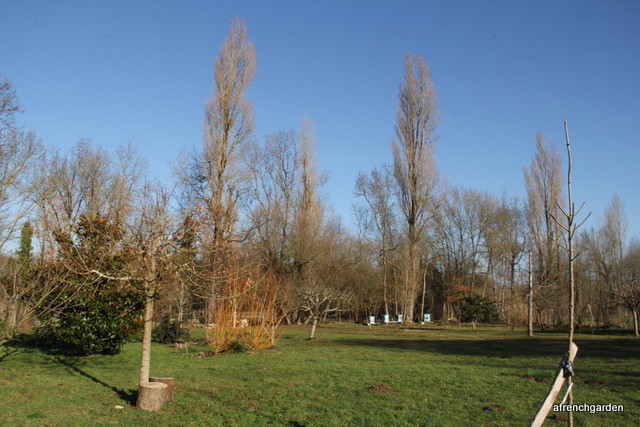
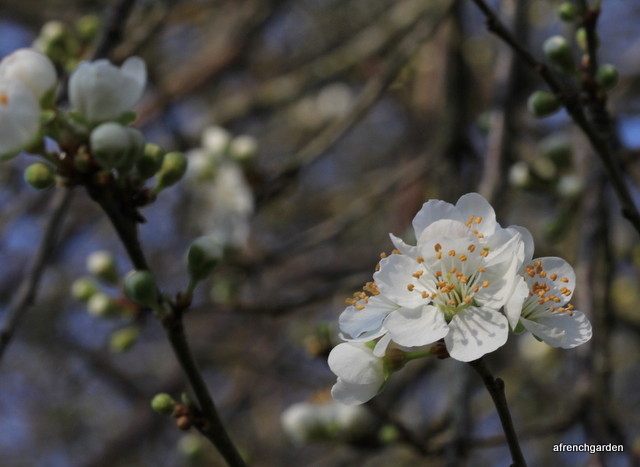
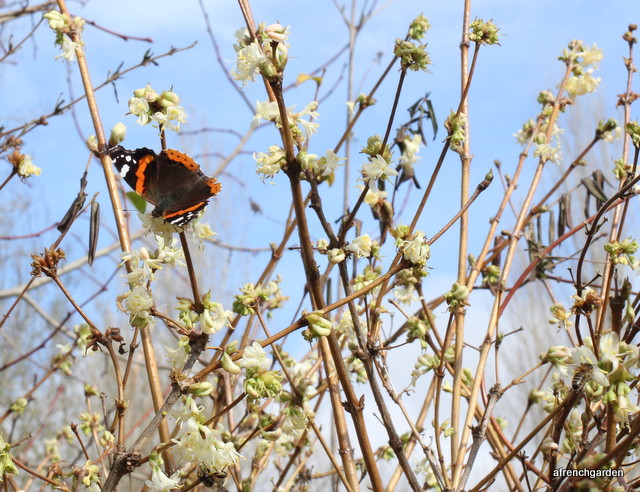
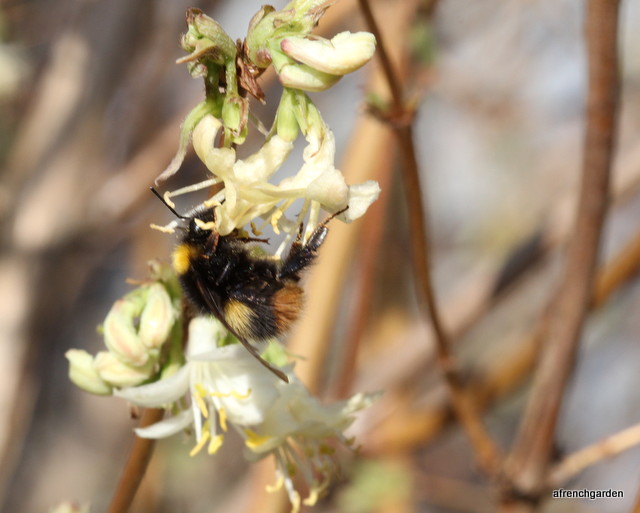
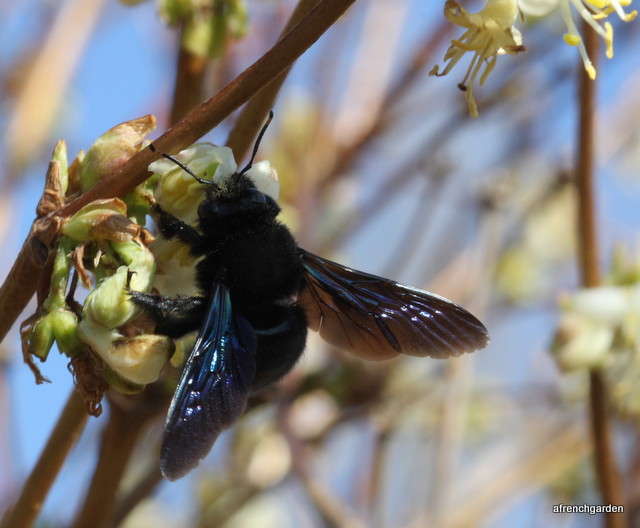
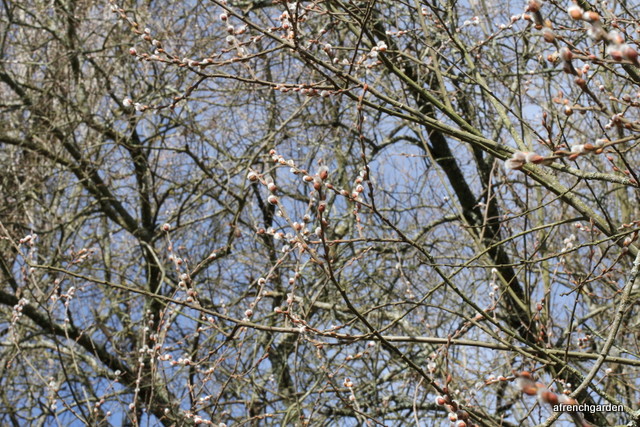


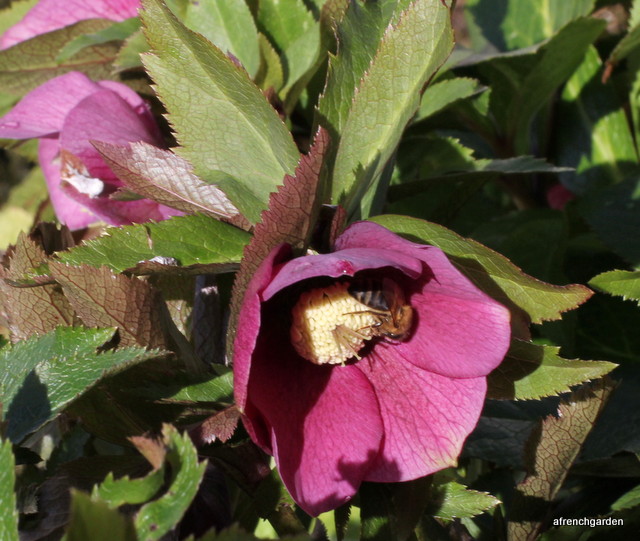

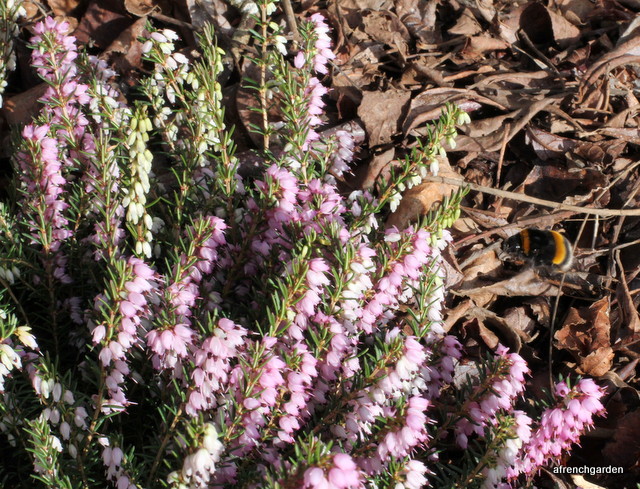

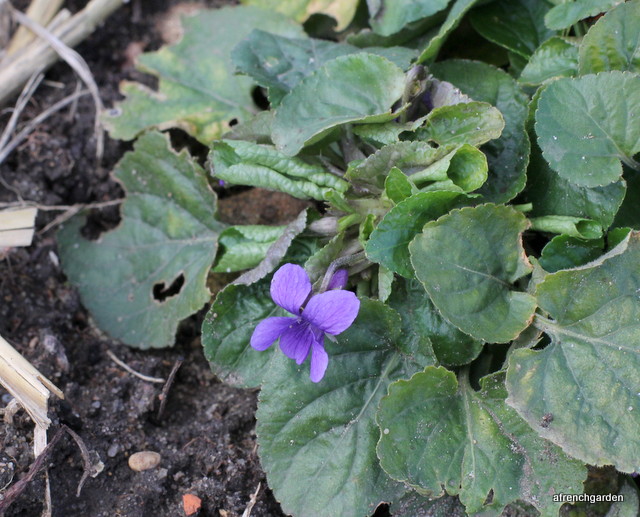

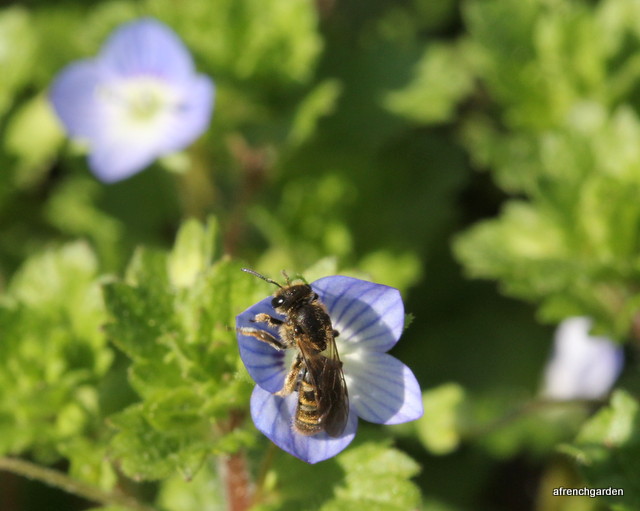

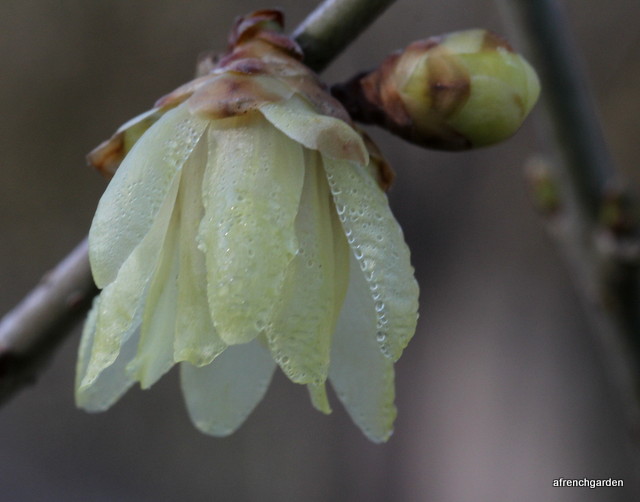
I’m in Provence, in the shadow of Mt. Ventoux and we are also having spring weather. It looks like your trees are flowering earlier than ours, so far only an ancient almond. It looks like you are in the Charente Maritime but I can’t really tell. If so I’m surprised you’re warmer than we are here — 18 today. We have had a few bumble bees but not many. This is our first year here and we are developing the gardens, so hopefully we will have more plants to attract them by next year.
LikeLiked by 1 person
We are in the Charente Maritime, not far from Saintes and Royan. We measured 19 in the shade today! Our hours of sunshine are comparable to yours but we will be cooler in the summer. It is good you are thinking early on of planting for the bees because the plants will attract them and the bees will give you such pleasure in the garden. Amelia
LikeLike
yes, i love the bees. I lived in the Herault for several years and had a native garden with lots of good wild bees, big green lizards, a snake or 2 and stellar tiny green frogs (rainett vert). I want to get that happening here and your blog will help me, many thanks.
bonnie
LikeLike
Sounds much like our garden. Our rainettes were out sunbathing on the rose trellis today. I have never seen any green lizards here though, only the common wall lizards 😦
LikeLike
Lovely to see your pictures of spring! The snow has just about melted here, but we will need a while to catch you up!
LikeLike
We did not get any white stuff this year. I had hoped our cold spell would keep the budding at bay because I am sure there will be plenty of frosty weather to come yet. Amelia
LikeLiked by 1 person
It’s nice to see fruit tree blossoms again.
I wish I could smell the wintersweet. I don’t think I’ve ever seen one.
LikeLiked by 1 person
It is not an American plant and I first encountered it as a cut flower in floral bouquets. I read it must have acid soil , so I did not plant it initially but mine just goes to prove you shouldn’t believe everything you read. Amelia
LikeLike
Thanks for the situation report, Amelia. Fruit tree blossoms are such a spring welsome sign, and I’m glad to see that your bees are ready for another season.
LikeLiked by 1 person
It is so good to have such bright, warm weather but it will not last at this time of year. Amelia
LikeLiked by 1 person
I was thinking about your generator comment. We have lived here almost 20 years and survived winter power cuts with candles, blankets and a wood stove to cook on, but it was a prolonged power cut in summer that finally tipped the balance for us. Couldn’t bear to see all my summer fruit melting in the freezers. Since purchasing one last year our power outs have been minimal. 🙂 We also have signs of spring, thank goodness. It has been a cold winter here with plenty of snow that no one knows how to deal with, but bulbs are pushing up, and hellebore is flowering, and yes we are seeing bees on the heathers. The first camellia buds are popping. Down in the valley things are much further ahead.
Annie—- in the Cascade Foothills.
LikeLiked by 1 person
I think one way to minimise power cuts is to buy a generator :). Our camelia are holding closed still, I think they are doing the right thing here. Amelia
LikeLike
It is good to see the signs of spring after your high winds, they can do so much damage. We have no mains gaz, instead we have a fire and the cooker running on LPG, in large cylinders. If there is a power cut all we need then is the candles. Lovely photo of the winter sweet.
LikeLiked by 1 person
I prefer cooking with gas and have used cylinders in other countries but this time I vowed no more hefting of gas cylinders. We were amazing lucky with the wind compared to a lot of people. Amelia
LikeLike
It looks very spring-like where you are and good to see all the bees. Yesterday was the first warm day here and of course the bees were out as well, buff-tailed bumblebees and honeybees.
LikeLike
These past few days have been more like summer but nevertheless the birds’ water trough had a good coating of ice on it this morning. Amelia
LikeLike
It is spring here now too Amelia, it is wonderful to be sitting outside, we even had lunch outside today, bliss!
LikeLiked by 1 person
Likewise! We have not put our larger table out yet but a small folding table for two gets put outside as soon as there is sunshine. I prefer eating outside. Amelia
LikeLiked by 1 person
Me too!
LikeLike
What an uplifting post Amelia, you have so many Spring flowers and here its a mainly grey and bleak February – Plum blossom seems a distant prospect! Maybe you have a form of Erica carnea there. I know its not for the impatient but I do wish Spring would hurry up in the UK!
LikeLiked by 1 person
I had a feeling that it is likely to be an Erica carnea and they are not supposed to thrive in this chalky region. I’ll just have to wait and see. I think the addition of the Erica darlyensis has done a lot for colour in the garden in the winter. Amelia
LikeLiked by 1 person
Yes, same thing here in the Mid-Atlantic State of the USA (North Carolina). Spring is about a month early!
LikeLiked by 1 person
How lovely, it looks as if your garden is enjoying Spring proper
LikeLiked by 1 person
Wow – as others have said, you are way ahead into Spring now! And it’s only mid-Feb. *Envy*. RH
LikeLiked by 1 person
It’s encouraging to see the bees enjoying the hellebores. The bees ignore my hellebore. Maybe I need to plant them en masse.
LikeLike
I try and plant in groups now as much as I can. I think it gives more impact and you are right, the bees will come for a mass of the same flower much more than isolated blooms. Amelia
LikeLiked by 1 person
I will see what changes I can make. I know the birds love the massed flowers/seeds in my garden . Sadly we’ve hardly had any lavender this year; the bees love that when it’s in full bloom.
LikeLike
Have you tried Nepeta? It flowers for much longer than Lavender and is much tougher. You can always try it out on a really difficult, dry spot as long as it is in the sun. Amelia
LikeLiked by 1 person
I used to have lots of Nepeta. This year I put in a small cutting which I hope will flourish and expand.
LikeLiked by 1 person
So lovely to see Spring springing – a window into the warmer times to come, Emma 🙂
LikeLike
This year spring has exploded. It has been a much more rapid blossoming of all the plants together, rather than a slower progress. Amelia
LikeLiked by 1 person
.
LikeLike